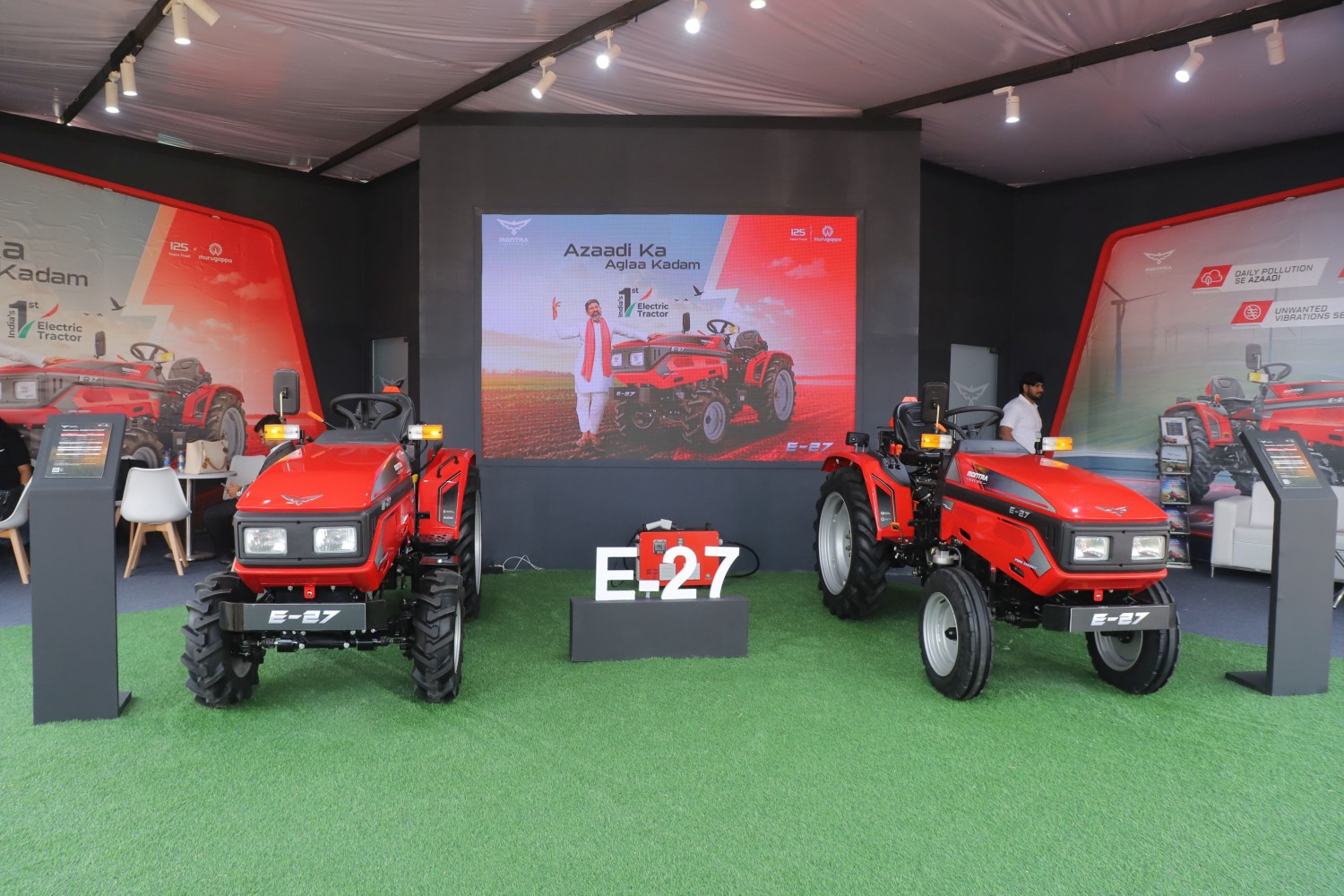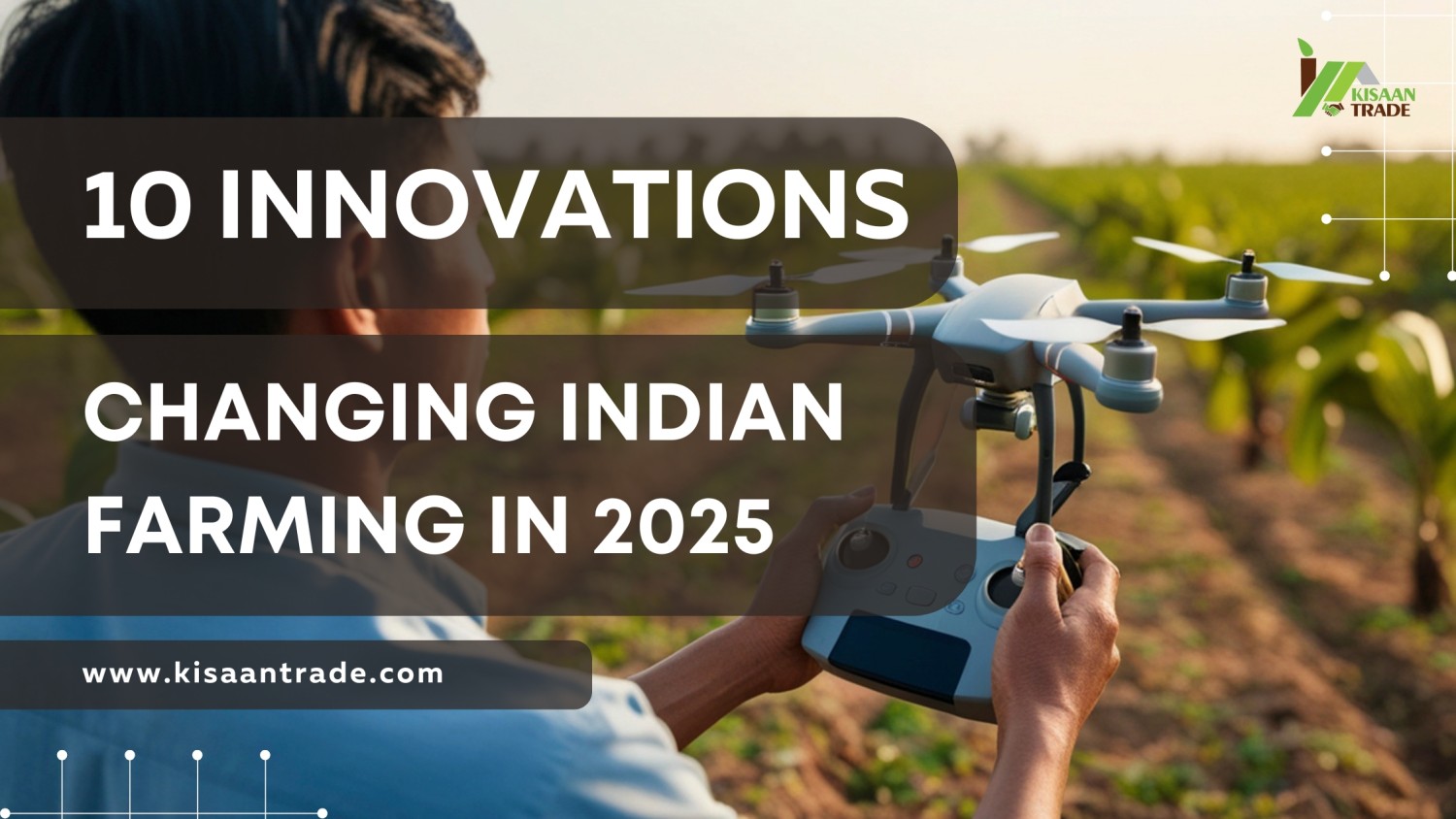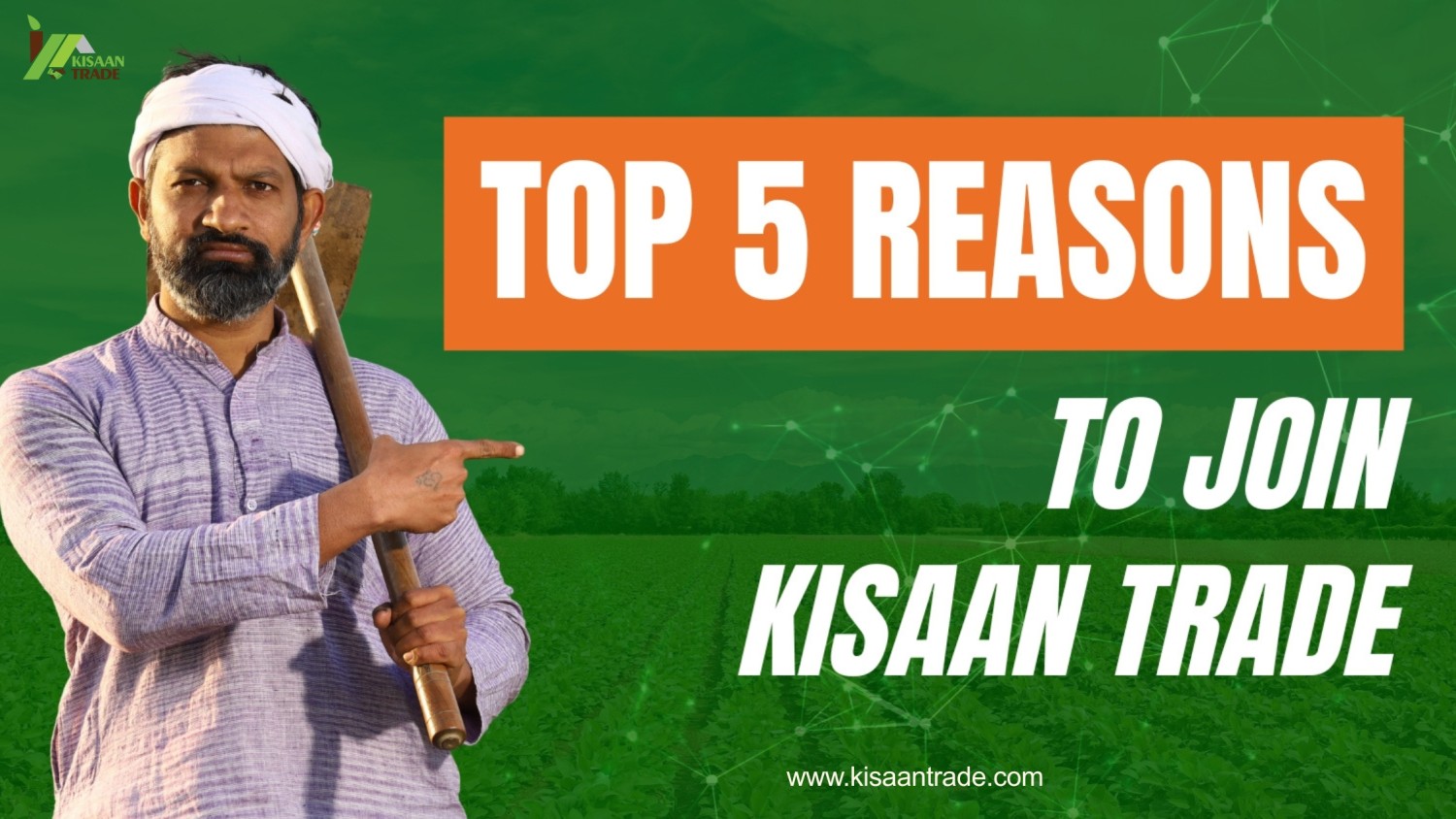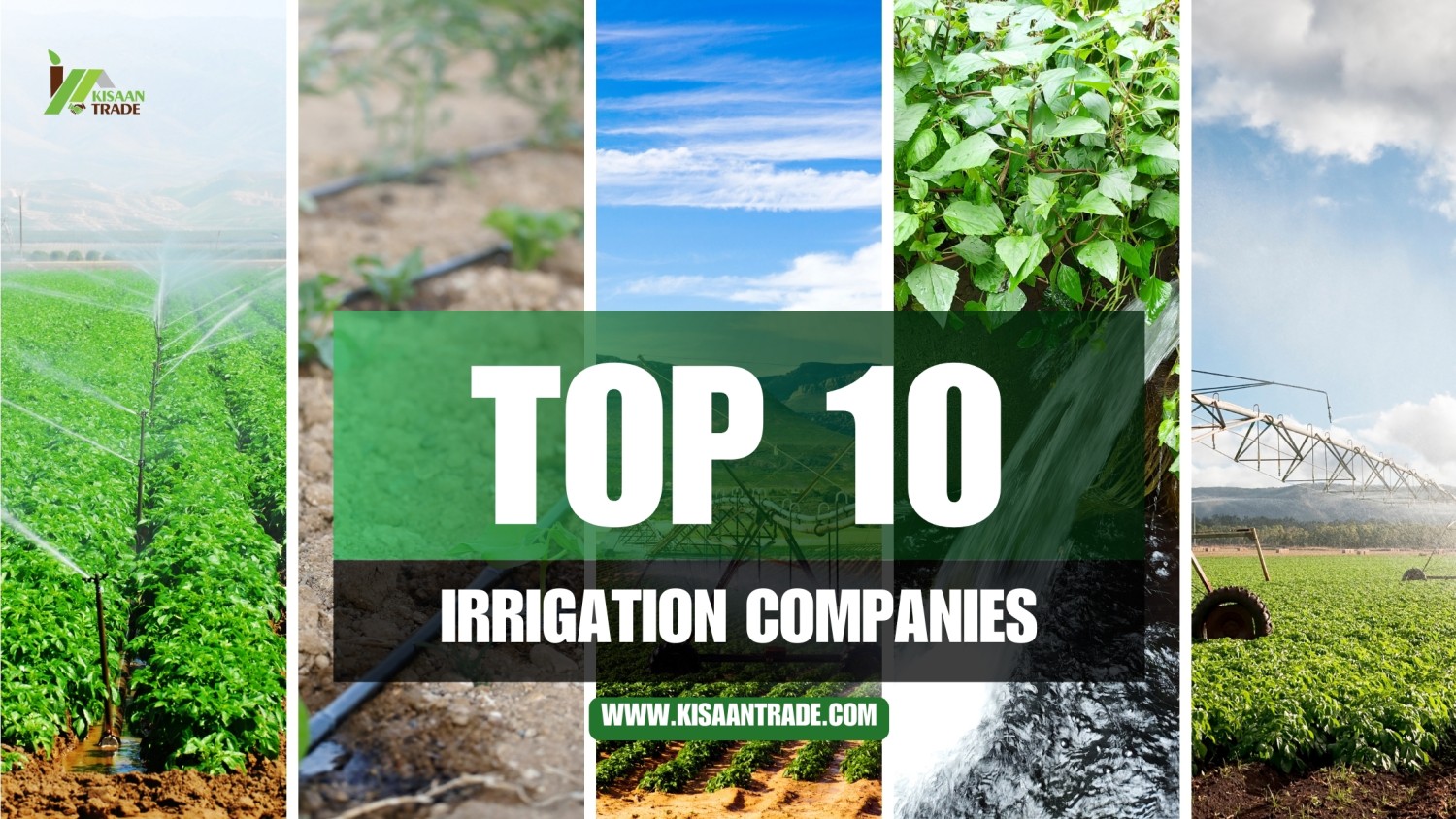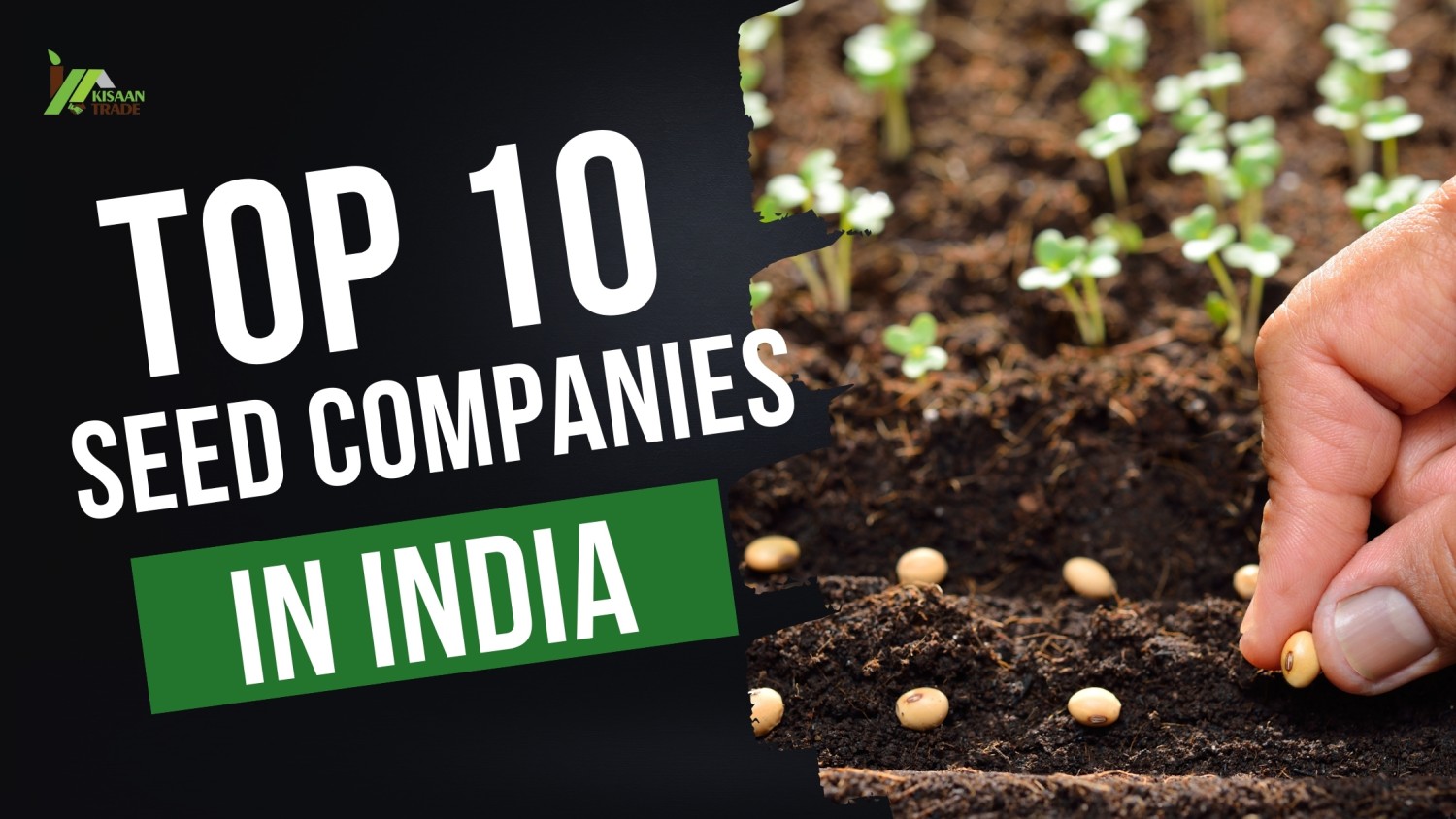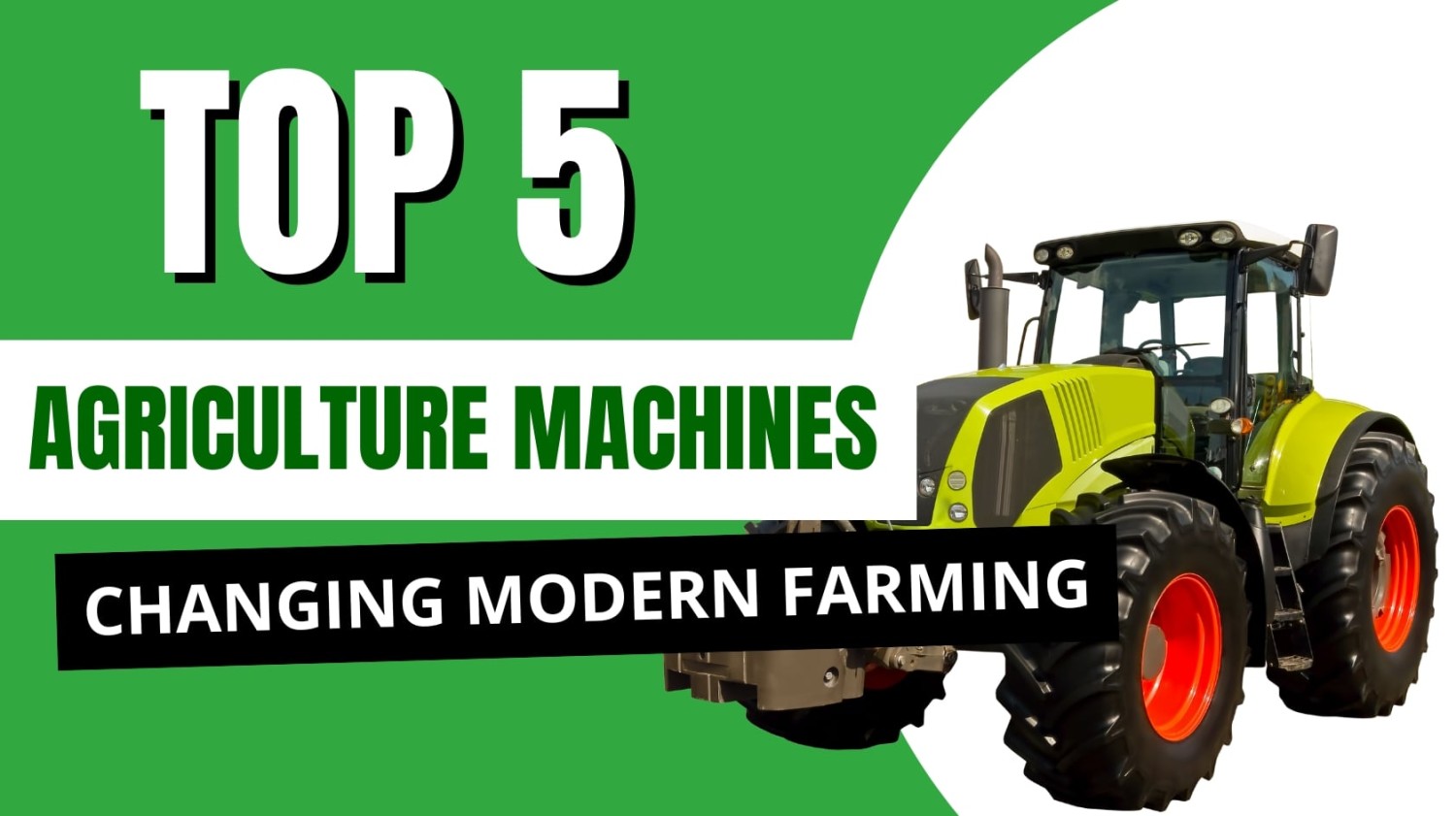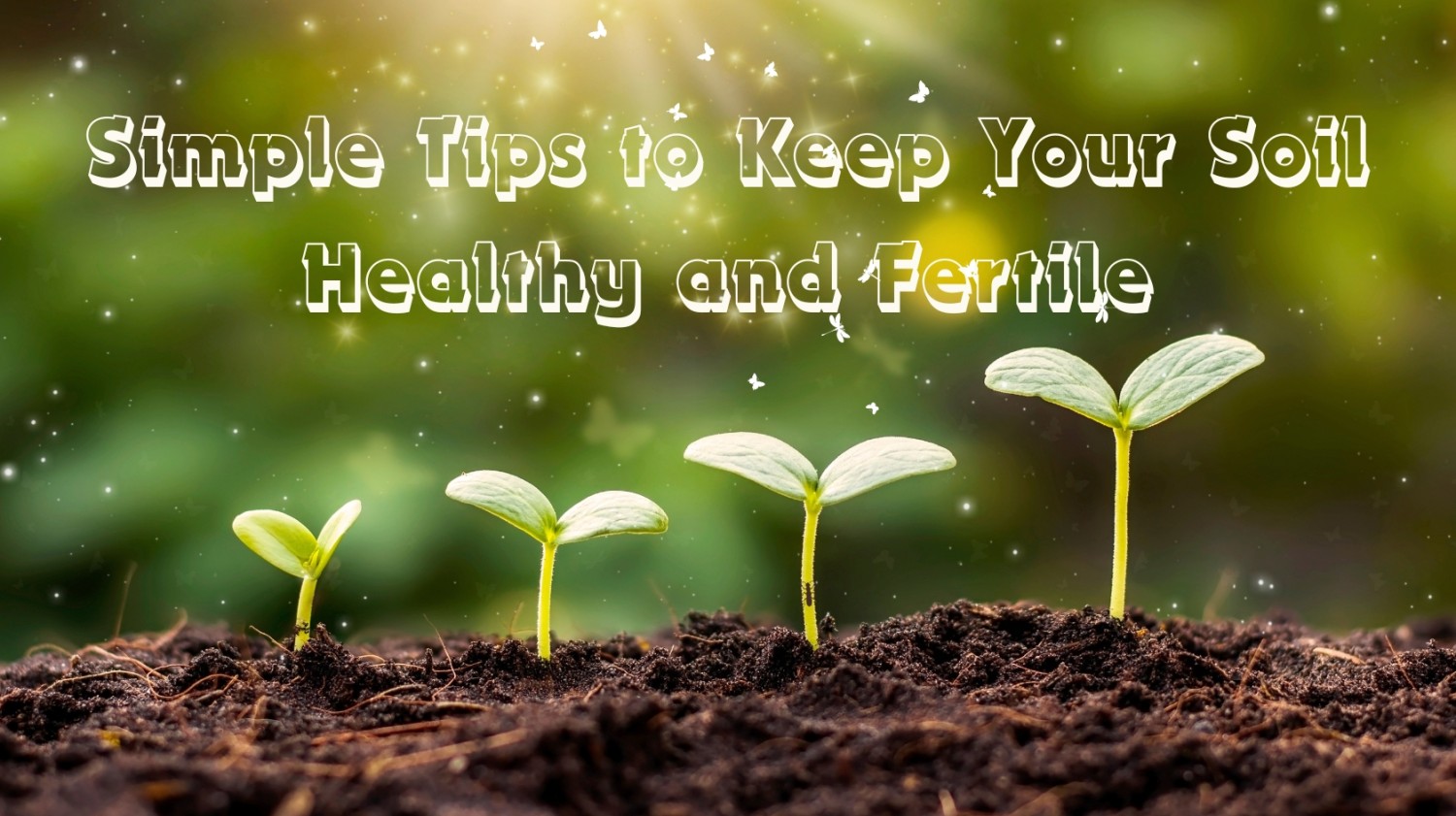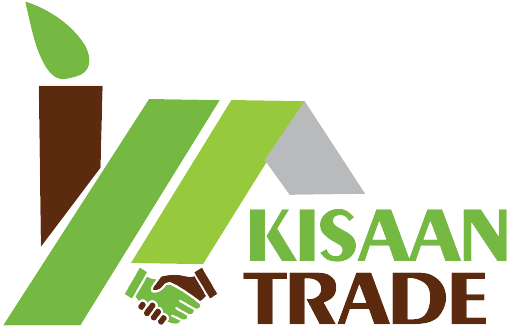Smart Farming Made Simple: The Agri Drone Transforming Agriculture with Precision and Efficiency
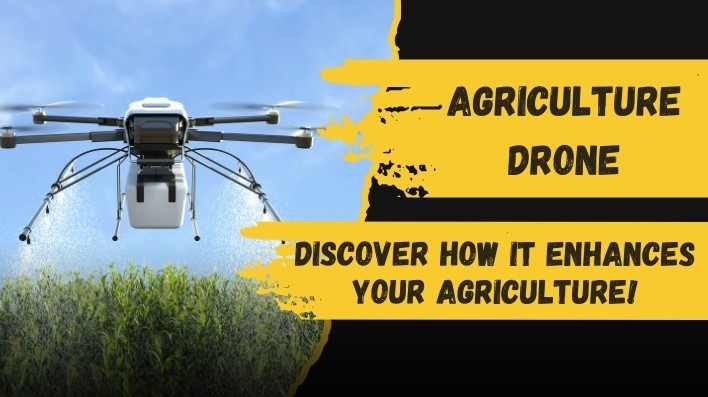
Smart Farming Made Simple: The Agri Drone Transforming Agriculture with Precision and Efficiency
Kisaan Trade Introducing Agri Drones: Revolutionizing Farming for a Sustainable Future. Agriculture has been a vital constituent of human civilization throughout history. It provides food, raw materials, and means of livelihood for billions. Centuries have witnessed changes in farming techniques, and it is technology that has brought in the new age of agriculture. The most promising innovation in this area is the application of Agri drones. The high-tech tools change how farming engineers view crop monitoring, pesticide applications, irrigation, and collection of much-needed crop data. Below, we will examine how Agri drones are changing farming, the benefits brought by these into the agriculture sector, and what the future of smart farming looks like. Kisaan Trade is the market leader of innovative farming solutions; it will soon introduce the agri drone in the farm field to increase its efficiency and sustainability.
Agri Drone
An agricultural drone is a UAV that is specially designed for agricultural purposes. Agricultural drones are equipped with high-resolution cameras, sensors, and GPS systems that enable them to perform various tasks, such as crop monitoring, mapping, spraying fertilizers and pesticides, and assessing the field conditions. Data gathered by these drones, together with insights derived from the air, help farmers make better decisions, increase productivity, and cut costs.
Although drones have become pretty common in the military, surveillance, and entertainment sectors, agricultural drones are more of a recent affair. Presently, agricultural drones are available in various shapes and sizes, but all of them serve different purposes to carry out precise farming, health check of the soil, or analyzing the health status of crops.
How Agri Drones Work?
An Agri drone captures air images of crop cover and then does an analysis, with the support of specialized software. The use of various sensors such as multi-spectral and thermal sensors coupled with LiDAR (Light Detection and Ranging) helps one acquire valuable field data. This includes:
1. Cameras and Sensors: Drones are used with high-resolution cameras and multispectral sensors that capture images of crops, soil, and other conditions in the field. Thermal sensors help by detecting temperature anomalies indicating water stress or pest infestation.
2. GPS Systems: In addition to being equipped with GPS systems, drones have their pre-programmed flight path to cover the field and collect data.
3. Software and Analytics: After the drone takes photographs of the area and extracts the data, this data is sent to some special software to get analyzed and then eventually returned to the farmer regarding crop health, soil type, or irrigation status among others.
4. Autonomous Flight: The advanced drones were designed with autonomous flight systems, meaning that without having to be remotely controlled frequently, they can do many things; this saves much labor, therefore, costs in an operation are minimized.
Key Benefits of Agri Drones
Agri drones are proving to be one of the most inevitable tools for farmers worldwide and have several advantages that never existed through conventional farming techniques. The following is a list of primary benefits that are based on using drones in agriculture.
1. Precision Farming
Agri drones enable precision farming, which is one of the benefits of using such drones. Precision farming is the data-related decision about how crops, or fields should be managed. Drones can collect precise data on the health of soil and crops, moisture content, and nutrient deficiency. Such data could be used to apply fertilizers, water, and pesticides in those areas that actually need it, without wasting any resources. Crop health monitoring becomes possible in real time with drones. This can identify areas of need for higher attention. Hence, more yield is obtained at a reduced cost of inputs.
2. Reduced Cost
It also consumes much labor, machinery, and chemicals for its production. Drones minimize all these as they automatically execute the task, including crop spraying, mapping, and monitoring. In addition, with drones, reliance on manual labor, which is costly and time-consuming, will be reduced; reliance on big machinery, too, will be minimized.
Third, drones ensure better resource management so that fertilizers and pesticides, water, are provided only where there is a necessity, further bringing down costs by unnecessary inputs.
3. Higher Yield of Crops
Drones empower the farmer with decision-making capability through real-time insights into the crop health and condition of the fields. Nutrient deficiencies or pest infestation and water stress may be so drastically indicated and detected early by drones, hence possible corrections are made on the problem before it's too late. This kind of proactive action will prevent crops from getting damaged while growing them under ideal conditions; therefore, this enhances productivity.
4. Crop Monitoring
Agri drones improve crop monitoring. They help farmers monitor crops continuously, getting a bird's eye view of their fields. They can detect problems that might not be noticeable from the ground, such as uneven plant growth, pest activity, or irrigation issues.
Drones capture high-resolution images and process them into actionable data that helps farmers spot problems early and respond quicker before losses in crops occur. It is particularly helpful for the large farms where human inspection would be too time-consuming and practically impossible.
5. Time Efficiency
Agriculture is a time-sensitive profession, and Agri drones save valuable time. Crop monitoring with traditional methods requires walking through fields and manually inspecting crops, which may take hours or days. Drones can cover areas in a matter of minutes that it would take to do by traditional methods. Within a few minutes, drones can take pictures over the fields, thereby collecting data over the entire crop in one take. This enables farmers to make quick decisions and allocate time for other significant activities, such as planning for harvest or labor management.
6. Sustainability and Environmental Benefits
Modern agriculture raises concerns about sustainability, and here comes the importance of drones in environmental-friendly practices. Precise data regarding soil health, water levels, and crop conditions provide from drones help farmers optimize their usage of water, fertilizers, and pesticides, which eventually leads to less waste and more sustainable farming practices.
For example, drones can be used to optimize irrigation systems so that the crops receive the right amount of water without over-irrigation or wasting resources. In a similar way, drones help farmers reduce the overuse of chemicals, which is harmful to the environment and increases production costs.
7. Data-Driven Decisions
Agri drones give farmers access to large amounts of data, enabling them to make data-driven decisions. With the help of sophisticated software, the drones collect and process information on crops, soil conditions, and weather patterns, which can then be used to improve farming practices.
Farmers can predict crop yields, harvest times, and resource requirements based on past data. It is a data-driven approach that guarantees efficient and effective farm management.
Applications of Agri Drones
Agri drones can be applied in various farming applications such as:
1. Crop Spraying: The sprayers with pesticides, herbicides, and fertilizers can be mounted on drones. Then, at the exact locations, they will spray them. That way, they will decrease chemical consumption and will apply it in the correct areas only.
2. Field Mapping and Soil Analysis: The drone will provide farmers with high-resolution maps of their fields. Based on this map, they can judge the soil condition, how irrigation systems could be planned, and what best approach should be undertaken for the crop planting process.
3. Water Management: Equipped with a thermal sensor, drones can capture images showing moisture content of the soil. Therefore, it is possible to adjust the schedules of irrigation according to minimum requirement.
4. Pest and disease scouting: By having multispectral cameras mounted on the drone, there is early identification of pest attacks and early identification of crop disease problems, enabling farmer to control their spread in case they spread at all.
5. Yield prediction: Crop growth patterns, which the drones will help them to discover, will also be helpful for yield prediction and better planning harvests.
Agri Drones Future
Future of agri drones is bright. There are lots of developments along the way which ensures that technology and software which lie at the backbone of the drone keep getting even better. As more people gain easy access to drones, it is expected that their use in farming will increase multifold in the coming years. Going forward, we can expect drones to be even more autonomous, calling for less intervention by humans, especially those involved in this field. The US government is developing innovative AI and machine learning to assist the drones come up with instant decisions through processing all the information they collect.
Conclusion
Drone farming, on the whole, is redefining how agriculture is to be perceived in society. With benefits that count into a list that includes but is not limited to: precision farming, decrease in costs, increase in yields, and sustainability. Because of these drones, the rise of contribution to agriculture with advancement in technology will bring about the age of smart farming that is efficient, productive, and green. It will make farmers get ahead of the curve, helping them meet the growing demand for food without hurting the environment much.
It is one such product from Thanos Technologies Pvt Ltd that made a breakthrough innovation in the area of agriculture and has given powerful tools to enhance productivity, save costs, and adopt more sustainable farming practices for farmers. Advanced drone technology with real-time data analytics is what the Syena H10i provides to offer precision agriculture that enables farmers to make smarter decisions on their operations.
The technology is going to assist agriculture in this great challenge era to enable farming chart out its agricultural future.The Syena-H10i Agri Drone is designed to bridge this gap by offering advanced spraying capabilities, ensuring precise application of fertilisers, pesticides and other essential crop treatments. This powerful spraying drone increases crop yield and optimizes resource use, reduces wastage and minimizes manual labour. Thanos Technologies Pvt Ltd is leading the way toward a more efficient, productive, and sustainable agricultural future through innovation and dedication to improving farming practices.
For more information on how to integrate the Agri Drone into your farming operations, contact Kisaan Trade.

